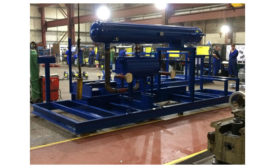Home » Keywords: » district heating
Items Tagged with 'district heating'
ARTICLES
Heating Homes with Waste Heat
Finland system uses waste energy from computing center to heat 1,500 homes
October 10, 2016
District Heating and Cooling Market to Reach $243.4 Billion by 2024
On the basis of consumption, district heating is the dominant segment
September 16, 2016
District Heating System Utilizes Waste Heat
Finland system uses waste energy from computing center to heat 1,500 homes
September 5, 2016
District Heating and Cooling Market to Expand at 5.7% CAGR to 2023
There are many factors favoring the growth of the global market
January 20, 2016
Project Is First to Combine Solar and Large Scale Heat Pump in District Heating
Star Renewable Energy and E.ON demonstrate how heat pump can replace CHP for lower cost and lower carbon heating
Read More
Hurst Boiler Selected for Biomass District Energy Project
Sullivan County, N.H., Sees Immediate Economic and Environmental Benefits
December 29, 2014
Dec. 22, 2014: Hurst Boiler Selected for Biomass District Energy Project
Sullivan County, N.H., Sees Immediate Economic and Environmental Benefits
December 22, 2014
Aug. 15, 2013: Watts Water Technologies Completes Sale of Watts Insulation
Watts Insulation Did Not Meet Performance Expectations
August 15, 2013
Copyright ©2024. All Rights Reserved BNP Media.
Design, CMS, Hosting & Web Development :: ePublishing




